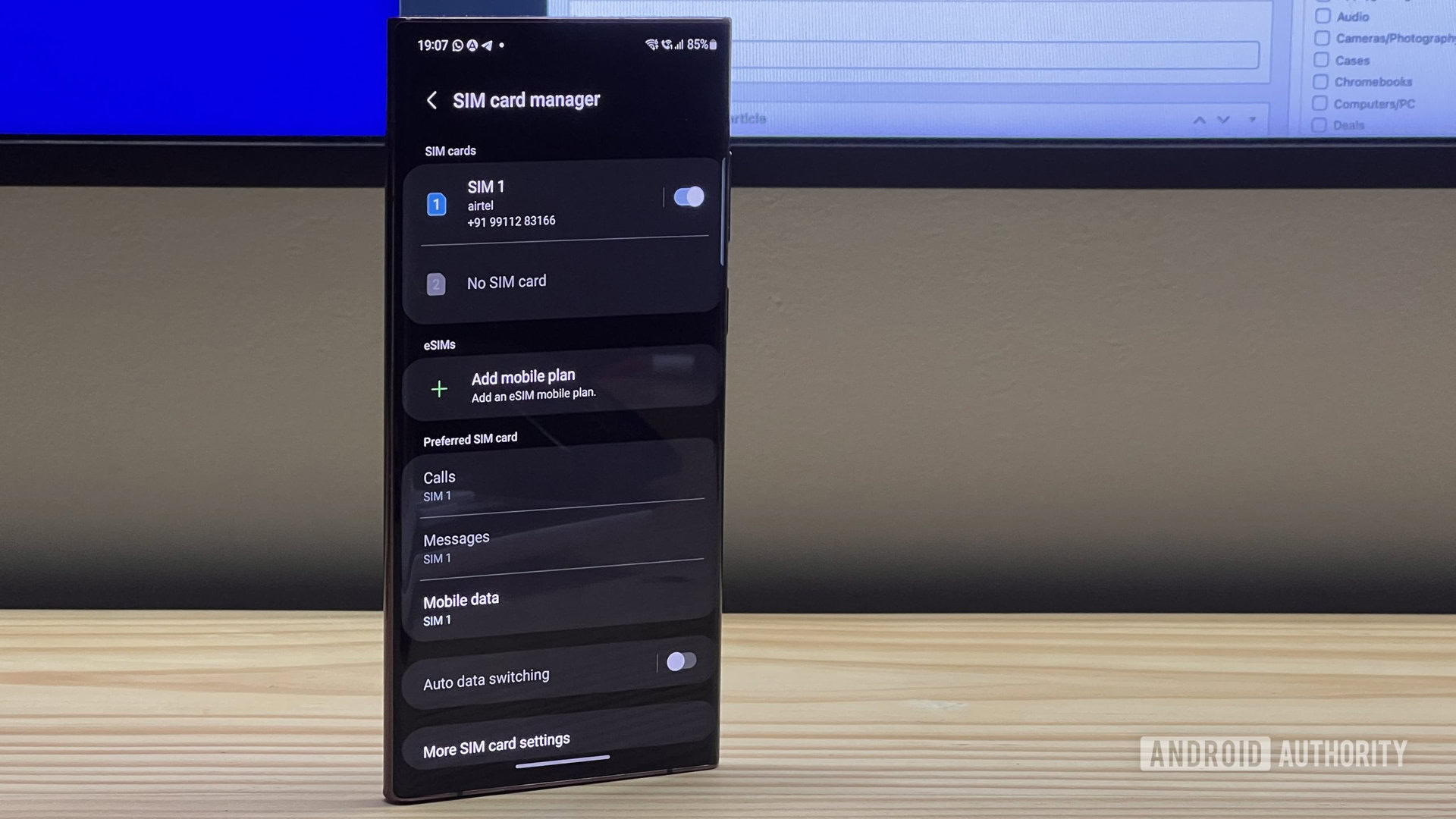Affiliate links on Android Authority may earn us a commission. Learn more.
eSIM compatible phones: How to know if your phone is eSIM compatible?
October 25, 2024
eSIMs are becoming a popular option for smartphone owners, with the virtual SIM providing users with dual-SIM features and the ability to switch between carriers without the need to remove or replace an existing physical SIM. This is particularly useful when traveling internationally. It isn’t perfect, though, with both eSIMs and physical SIMs having their fair share of pros and cons. However, more and more network carriers are rolling out support for this feature, so now might be a good time to find out if you can use it. Interested in esim compatible phones but unsure if your current phone applies? Here’s how to check if your phone is eSIM-compatible.
QUICK ANSWER
There are a growing number of eSIM compatible phones out there from a variety of OEMs and so checking whether your phone supports eSIMs depends on the make and model. On an iPhone, go to Settings > General > About and look for an IMEI number in the Digital SIM section. On Android phones, go to Settings > About > Status info (the steps may differ depending on your phone) and look for an EID.
JUMP TO KEY SECTIONS
How to check if your phone supports eSIM

Most recent flagship smartphone releases are eSIM-compatible. Apple went one step further and completely removed the physical SIM card slot from the iPhone 14 in the US, a move it continued with the iPhone 15 and iPhone 16. For now, most Android phones remain dual-SIM with one eSIM and one physical SIM. If you have an older model or aren’t in the US, there are a few ways to check if your phone supports eSIMs.
You can check the phone’s user manual to learn about support technologies. Network carriers and travel eSIM providers, like Ubigi, also provide a continuously updated list of supported smartphones. However, there’s an easy way to confirm eSIM compatibility on your phone through the Settings menu.
Apple iPhone
To check if your iPhone supports eSIMs, go to Settings > General > About and scroll down to the Digital SIM section. If you see an IMEI number, your phone is eSIM-compatible. Another way would be to go to Settings > Cellular and look for the Add eSIM button. If you are ready to set it up, tap the button and go through the steps to activate an eSIM on your iPhone.
Apart from regional restrictions, most iPhones going back to the iPhone XS, XS Max, and XR support eSIMs.
Samsung Galaxy phones
On a Samsung Galaxy smartphone, go to Settings > Connections > SIM card manager. The phone supports eSIMs if you see the Add eSIM option. Tap the button and go through the process to activate an eSIM on the Samsung phone.
Galaxy S devices going back to the S20 series, and all Galaxy Z Flips and Z Folds support eSIM. With mid-rangers like the Galaxy A54 and Galaxy A34, eSIM support is only available in select markets. But you’re unlikely to have eSIM support on Samsung’s entry-level smartphones.
Google Pixel phones

On a Pixel smartphone, go to Settings > Network and Internet and click on SIMs. If your phone already has a physical SIM, tap the plus icon in this section instead. If you see the option to Download a SIM instead, your phone supports eSIMs. You can then activate an eSIM on your Pixel smartphone.
All Pixel smartphones, including Google’s “a” series devices, support eSIMs, going back to the Pixel 4 series. eSIM-compatibility on older Pixels is limited to specific regions and carrier networks.
Motorola smartphones
On Motorola smartphones, go to Settings > Internet and Networks > Mobile network > Advanced > Carrier. Tap on Add Carrier. If you see the option to scan a QR code or other ways to add an eSIM, your phone is compatible.
How to make your phone eSIM compatible
There’s no easy way to make your phone eSIM-compatible if it doesn’t support the technology. However, a hardware-based workaround is available that’s a little complicated but will do the trick if you want to add eSIM support to your phone. In an X (formerly Twitter) thread, Android expert Mishaal Rahman explains how to add eSIM compatibility to any smartphone. Just be aware in many situations this is going to be unstable, so you’re much better off sticking to a traditional SIM card until you upgrade to your next phone.